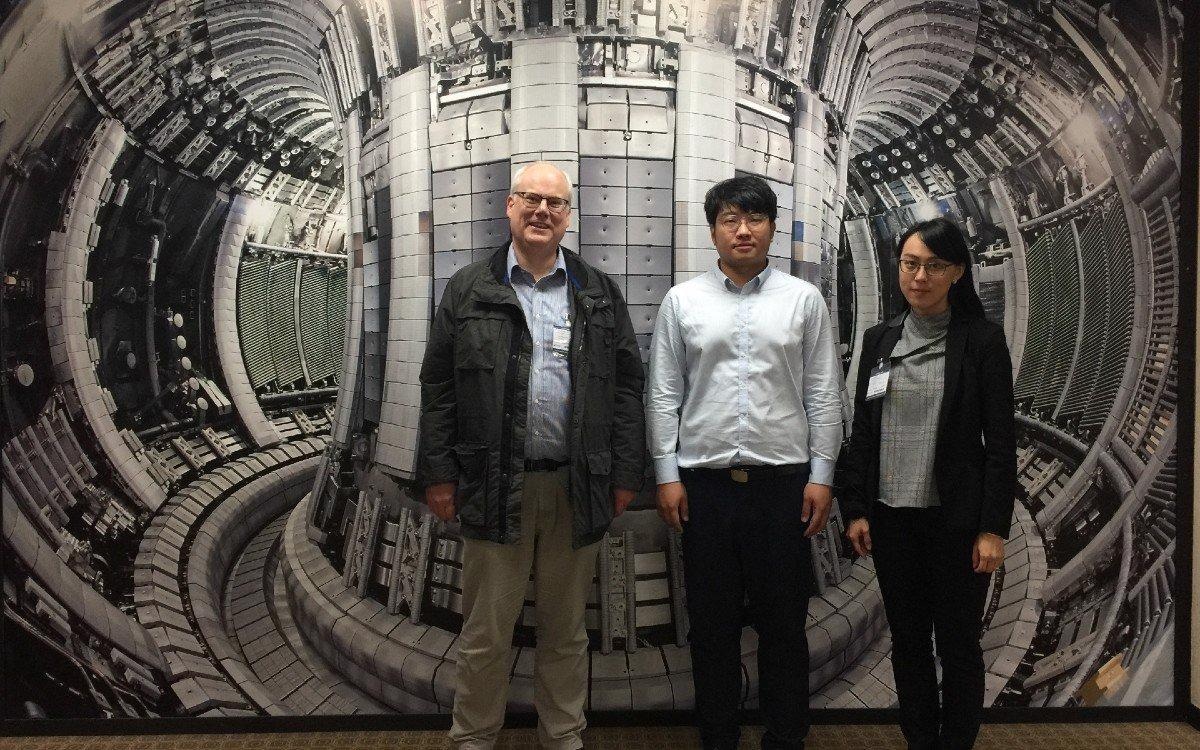To develop a novel, cost-effective, feasible and harmless source of low-carbon electricity via nuclear fusion, materials engineers at the University of Surrey and the UK Atomic Energy Authority are supporting a global effort.
 Scientists around the world are working to develop a new, economically viable, and safe source of low-carbon electricity through nuclear fusion. The picture shows the University of Surrey team (l-r): Dr. Mark Whiting, Bin Zhu, Dr. Tan Sui. Image Credit: University of Surrey.
Scientists around the world are working to develop a new, economically viable, and safe source of low-carbon electricity through nuclear fusion. The picture shows the University of Surrey team (l-r): Dr. Mark Whiting, Bin Zhu, Dr. Tan Sui. Image Credit: University of Surrey.
The research team from the University of Surrey will be employing their knowledge to upgrade stress measurement techniques that could enable researchers to map the residual pressure inside a volume of steel, instead of single points. This team’s new technique will be used to confirm if welds are effective and safe for usage in future fusion energy plants.
Developing techniques and introducing new approaches to UK research is essential if we’re to move towards energy generated through fusion, which could be a key part of the world’s long-term energy needs by the second half of this century. Our next step is to process the data acquired through these processes into a simulation model which will enable us to accurately predict the residual stress on EUROFER 97 steel joints after welding.
Dr. Tan Sui, Senior Lecturer, Materials Engineering, University of Surrey
Dr. Sui led this study.
We are now entering the engineering design phase for the next generation of nuclear fusion power plants, building upon decades of research at UKAEA and the wider international fusion community. Our team will tackle engineering challenges to accelerate fusion demonstrators.
Dr. Yiqiang Wang, Senior Materials Engineer, UK Atomic Energy Authority
“This collaboration between the University of Surrey, UKAEA, EUROfusion, the Science and Technology Facilities Council’s ISIS Neutron, and Muon Source and industry will continue to demonstrate the efficiencies offered by cross-sector and international partnerships in accelerating the development of fusion energy technologies,” added Dr. Yiqiang Wang.
EUROFER 97™ steel — European reference steel invented in 1997 — has been exclusively built as a structural material candidate for future fusion powerplants’ components. It has to endure temperatures of 550 °C and high levels of irradiation without getting degraded to be effective. The Surrey team is concentrating on examining the longevity and integrity of the steel welds, which would be needed in building the fusion reaction chamber.
The University of Surrey is collaborating with the UK Atomic Energy Authority’s fusion research center in Culham and STFC’s ISIS Neutron and Muon Source in Oxfordshire, a world-leading center for research in the physical and life sciences that creates beams of neutrons and muons that let researchers examine materials at the atomic level.
The Surrey team also functioned closely with TESCAN, a Czech company that is an international supplier of scientific instruments — which manufactures and designs electron and ion-beam microscopes and other related instruments.
Journal Reference:
Zhu, B., et al. (2022) Revealing the residual stress distribution in laser welded Eurofer97 steel by neutron diffraction and Bragg edge imaging. Journal of Materials Science & Technology. doi.org/10.1016/j.jmst.2021.12.004